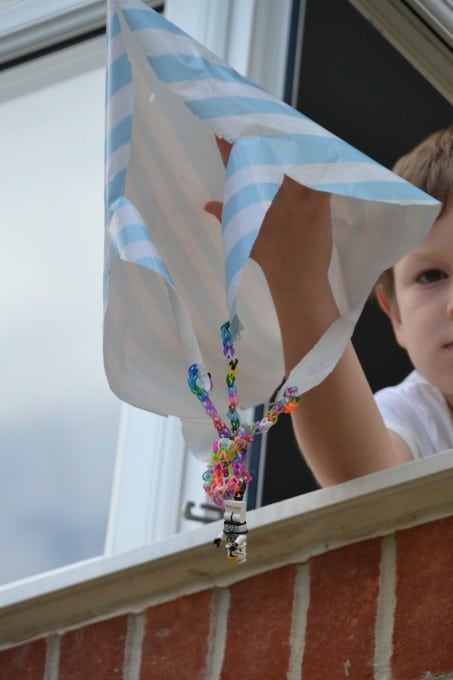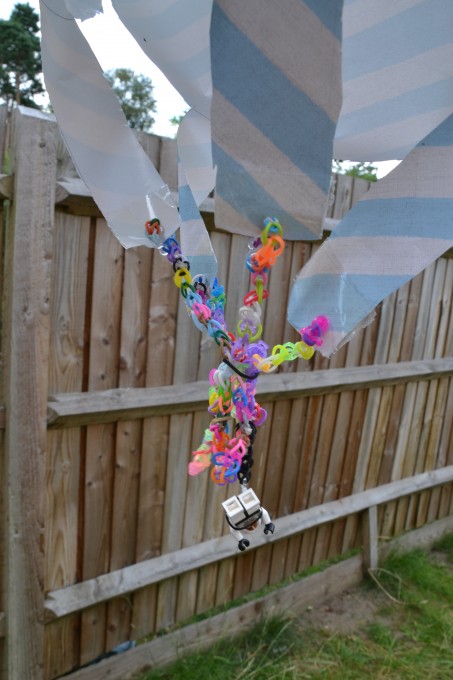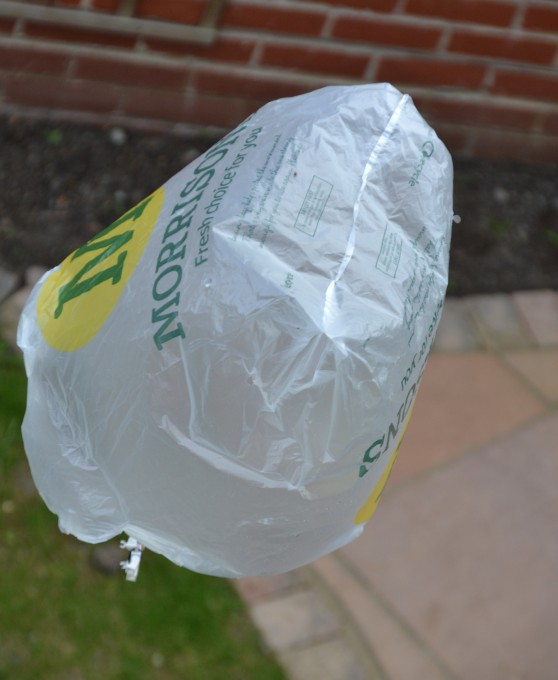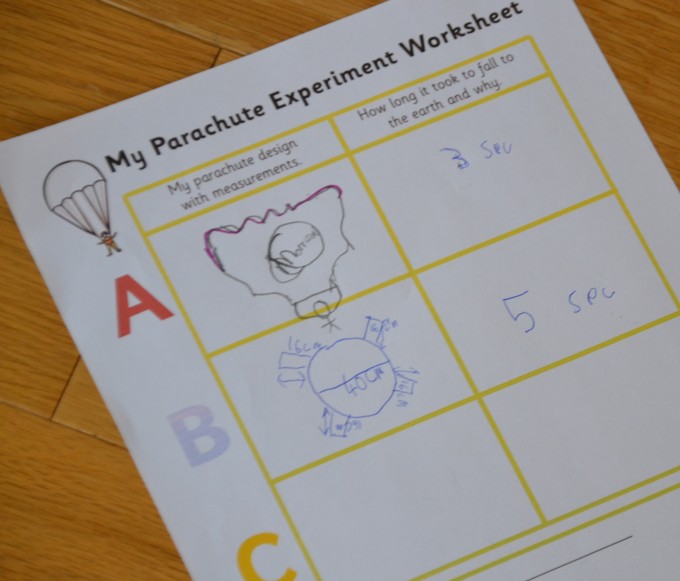The second in our series of LEGO based posts in association with Twinkl is this fun parachute experiment. Can you design a parachute to slow the fall of a LEGO man?
What you need
- Carrier bag, paper, material etc for your parachute
- A LEGO man
- String or something else to fasten your man to the parachute
- Timer
Method
- Design and build your parachute. What do you need to think about? Would a larger parachute work better than a smaller parachute?
- Record the time taken for your LEGO man on his own to drop from a height. You’ll need to drop the parachute from the same height.
- Be very careful dropping the parachute if you stand somewhere high up and if you’re the person underneath. My little scientist was extra careful with this lab coat and goggles from Learning Resources.
Our first parachute was made with wrapping paper and the man attached with loom bands, the down side of this is that the bands made it quite heavy,
Our second parachute was made with a plastic carrier bag. This was much lighter.
We used this experiment sheet from Twinkl to record our results.
The Science Bit
If you tried dropping paper and a LEGO man (or similar), the paper will drop to the floor more slowly than the man, this is because the paper has a larger surface area, so has to push against more air as it drops, which means the air resistance is greater and it drops more slowly.
We found that the parachute slowed the fall of the LEGO man, this is because the parachute has a large surface area and so the air resistance acting on it is greater than for just the LEGO man by himself.
Did you know??
If we dropped a hammer and a feather we would expect the hammer to fall the fastest, but if we did this on the moon where there is no air resistance they would hit the ground at the same time. This is because the force pulling them down is gravity, which is the same for both and without air resistance is pretty much the only thing that affects the objects as they fall.
Extension Activities
- What happens if you attach a LEGO man to a balloon, is the fall slower or faster than the parachute?
- What happens if you make your parachute larger?
- What shapes work best? What shapes are parachutes?
Related posts
Last Updated on August 5, 2017 by Emma Vanstone






Leave a Reply